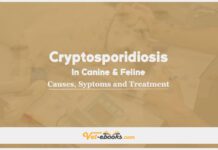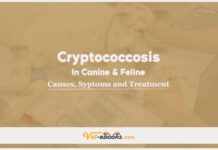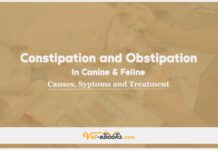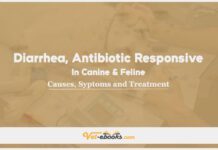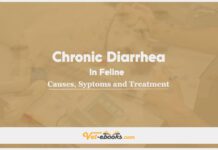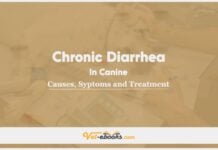Esophageal Foreign Bodies In Canine and Feline: Causes, Symptoms and Treatment
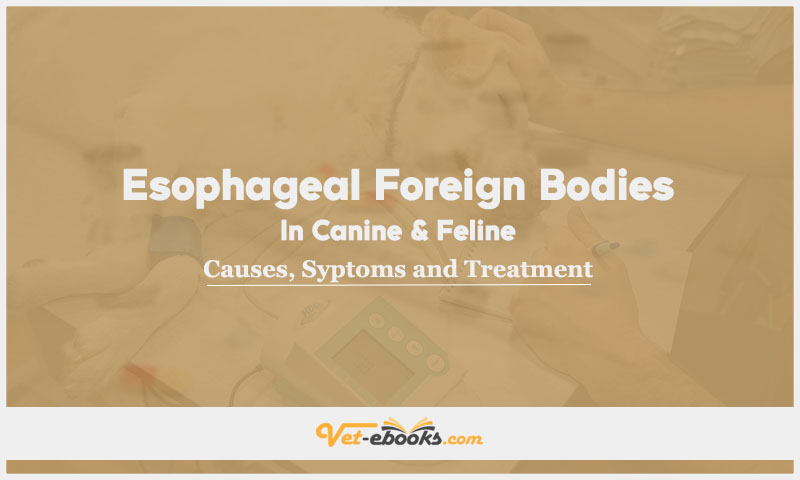
Overview
The act of consuming foreign substances or food items that are of a size that cannot be easily passed down the esophagus results in a partial or full blockage of the passage.
Causes of Esophageal Foreign Bodies In Canine and Feline
Causes
This effect usually happens when an object has the right size, shape, or surface to stop it from moving freely through the esophagus and getting stuck before it can pass.
Risk factors
- Unregulated dietary patterns.
- The availability of foreign materials.
- Small-breed dogs are more frequently affected by this condition, with terrier breeds being commonly overrepresented.
- It is more prevalent in animals in the young to middle-aged demographic.
Pathogenesis of Esophageal Foreign Bodies In Canine and Feline
- Edema is a sign of mucosal inflammation and mechanical obstruction caused by foreign bodies stuck in the esophagus.
- In severe cases, they may also lead to ischemic necrosis and esophageal perforation.
Symptoms (History & Physical Examination) of Esophageal Foreign Bodies In Canine and Feline
History
The most frequently observed symptoms encompass retching, gagging, fatigue, anorexia, ptyalism, regurgitation, restlessness, dysphagia, odynophagia, and prolonged gulping.
Physical Examination
- Ptyalism.
- The observed symptoms may lack distinctiveness.
- Infrequent instances of discomfort may arise during palpation of the neck or cranial abdomen.
Diagnosis of Esophageal Foreign Bodies In Canine and Feline
1- From History and Physical Examination
2- Diagnostic Procedures
CBC/BIOCHEMISTRY/URINALYSIS
- Typically, the observed symptoms are not remarkable.
- However, electrolyte levels may not be normal, there may be an increase in inflammatory white blood cells, and/or the blood concentration may rise. This depends on how bad the symptoms are and how long the body has been dehydrated.
Imaging
- The majority of esophageal foreign bodies exhibit radiodensity and can be easily observed on thoracic radiographs.
- These objects tend to become lodged at locations where the esophagus is minimally distended, such as the thoracic inlet, base of the heart, and esophageal hiatus.
- The presence of air-induced esophageal distension may be observed at a cranial position relative to the foreign object.
- The presence of air in the esophagus does not necessarily indicate the presence of esophageal foreign bodies, as it can also be observed in cases of aerophagia.
- In order to identify radiolucent items, it is necessary to do a contrast esophagram or videofluoroscopy.
- In cases where there is suspicion of perforation, it is recommended to employ an aqueous organic iodide contrast agent for the purpose of conducting imaging tests.
- The presence of air and/or fluid in the mediastinum or pleural space indicates esophageal perforation.
- Depending on the severity, this finding may ensure surgical intervention as an alternative to esophagoscopy.
- The presence of pulmonary infiltrates indicates the likelihood of aspiration pneumonia.
There are two potential approaches for the removal of foreign bodies: endoscopic extraction and surgical intervention.
Esophagoscopy lets the doctor see both the foreign object and the lining of the esophagus directly. This makes it easier to judge how badly the esophagus is damaged.
The procedure of esophagoscopy enables the extraction of the majority of foreign objects through the utilization of retrieval devices. It also makes it easier to look at the mucosa to see if there is any damage that might have happened after the foreign object was removed.
3- Differential Diagnosis
- Esophagitis.
- Esophageal stricture.
- Esophageal neoplasia.
- Megaesophagus.
- Other esophageal disorders
Treatment of Esophageal Foreign Bodies In Canine and Feline
General:
- In cases of emergencies, it is important to promptly address the potential danger of esophageal perforation, which can lead to significant patient morbidity and mortality.
- Therefore, it is recommended to approach these situations as urgent and give priority to the performance of endoscopy as expeditiously as feasible following the diagnosis.
- If the endoscopic recovery of the foreign body is successful and there is minimal damage to the esophagus, it is possible for the patient to be discharged on the same day.
Medications:
- In cases where there is notable mucosal damage, it is advisable to administer medication for esophagitis, such as sucralfate slurry (0.5–1 g/dog orally every 8 hours), which aids in the protection and restoration of the mucosal lining.
- The use of a proton pump inhibitor, such as omeprazole or pantoprazole, at a dosage of 1 mg/kg every 12 hours is recommended for the purpose of effectively reducing gastric secretions, which have the potential to contribute to the development of reflux esophagitis.
- Broad-spectrum antibiotics, such as amoxicillin or Clavamox™, are exclusively offered to animals that have experienced mucosal perforation.
- Metoclopramide (0.2–0.5 mg/kg intravenous, subcutaneous, per os every 8 hours) or cisapride (0.5 mg/kg every 8–12 hours per os for dogs; 2.5mg for cats) is supplied in order to enhance stomach motility and reduce the occurrence of reflux esophagitis.
- Gastrostomy tube insertion for enteral feeding may be important in animals with significant mucosal damage.
- The potential efficacy of administering viscous lidocaine gel with water, 2-3 times a day, in alleviating esophageal pain should be considered.
Some Notes:
- In cases where the treatment for foreign body removal is performed in a manner that minimizes trauma and the esophagus has incurred only little damage, no additional postoperative care is required other than regular patient monitoring.
- In cases of significant mucosal trauma, it may be necessary to insert a gastrostomy tube to provide enteral nutritional assistance while the esophagus undergoes the healing process.
- In cases of extended esophageal rest, it may be necessary to administer fluid therapy in order to sustain optimal hydration levels.
- No modification in the diet is required except, possibly, adjusting the texture of the food to a more fluid state.
- When endoscopy fails to remove the foreign body, when the object can be moved into the stomach lumen by endoscopy but is too big to pass through the digestive tract, or when there is a large esophageal perforation or necrotic area that needs to be resected, surgery is needed.
- The process of advancing a bone foreign body into the stomach is frequently considered to be a less stressful approach compared to attempting extraction through transoral endoscopy. If necessary, a gastrostomy procedure may be conducted.
- The majority of bone foreign bodies can be safely allowed to undergo dissolution within the gastric environment, showing the necessity for surgical intervention.
- Surgically removing nondigestible foreign materials such as wood, metal, or plastic that have been ingested and passed into the stomach may be necessary.
- Complications arise in approximately 25% of patients who have foreign bodies.
- The complications that are commonly observed include esophageal perforation, esophageal strictures, esophageal fistulas, and severe esophagitis.
- Focal, transitory disruptions in esophageal motility may arise as a result of esophageal trauma.
- As a result of perforation, secondary problems like pneumomediastinum, pneumothorax, pneumonia, pleuritis, mediastinitis, and bronchoesophageal fistulas may appear.
Do You Want To Increase Your Veterinary Knowledge and Practical Skills?
You Can Now Browse and Download +3000 Books For Veterinary Professionals & Students Online.
Download Veterinary Books

